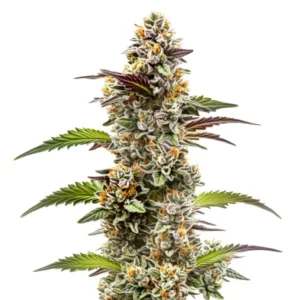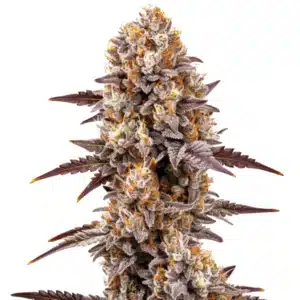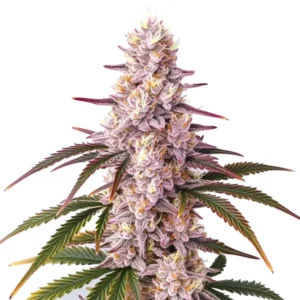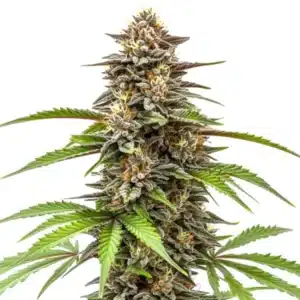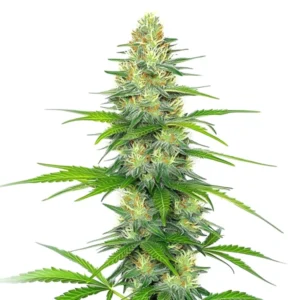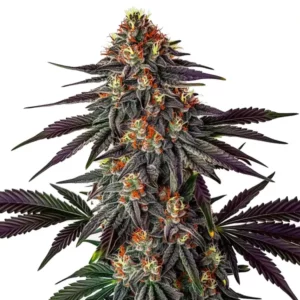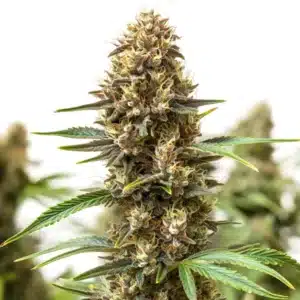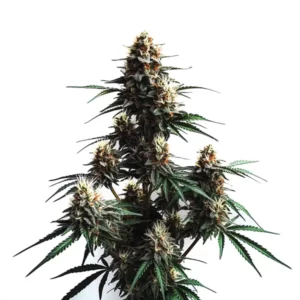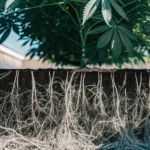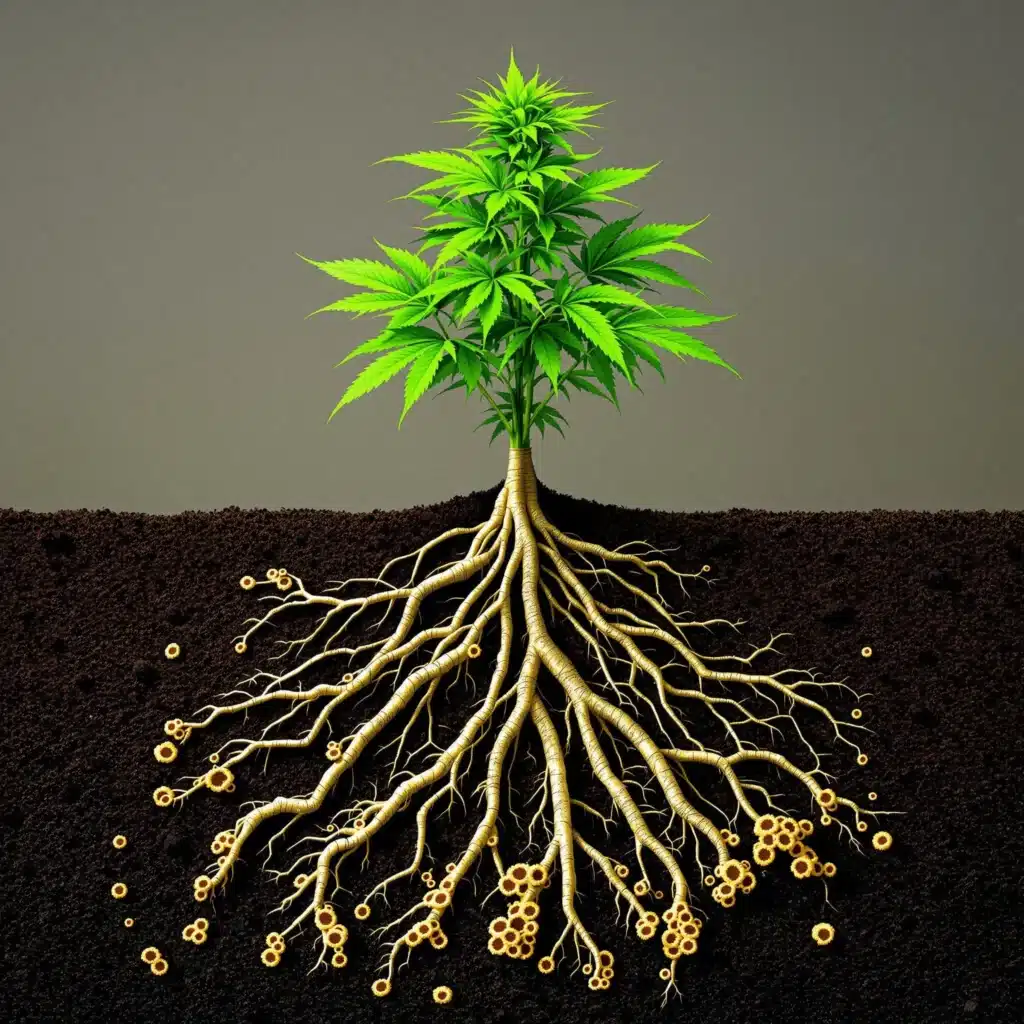
Maximize Cannabis Cultivation with Mycorrhizae Fungi
What Are Mycorrhizae and Why Are They Important?
Mycorrhizal Fungi
Mycorrhizal fungi are essential microorganisms that form a symbiotic relationship with plant roots. These fungi expand the plant’s root system, creating a vast network that improves nutrient and water absorption. For cannabis growers, mycorrhizae are a game-changer, significantly enhancing plant health and yield.
The fungi work by attaching to the root system, extending their reach into the soil. This network allows cannabis plants to access nutrients like phosphorus and micronutrients that would otherwise be unavailable, ensuring robust growth.
Recommended Strains
Jungle Breath
|
|
THC | 24% - 28% (High) |
|
|
Type | Feminized |
|
|
Yield | High |
|
|
Phenotype | 80% Indica / 20% Sativa |
Jungle Lava
|
|
THC | 25% - 27% (High) |
|
|
Type | Feminized |
|
|
Yield | High |
|
|
Phenotype | 70% Indica / 30% Sativa |
Benefits of Mycorrhizae for Cannabis Plants
The best mycorrhizae for cannabis offer numerous benefits, including improved nutrient uptake, enhanced root health, and increased stress resistance. These advantages lead to healthier plants with higher yields and better terpene profiles.
Cannabis plants grown with mycorrhizae also exhibit greater resistance to pests and diseases. This natural defense mechanism is invaluable for organic and sustainable cultivation practices, reducing the need for chemical interventions.
Promos & Deals
Types of Mycorrhizae for Cannabis
Endomycorrhizae vs. Ectomycorrhizae
Endomycorrhizae, specifically arbuscular mycorrhizal fungi (AMF), are the most beneficial for cannabis plants. These fungi penetrate the plant’s root cells, forming structures that facilitate nutrient exchange. Ectomycorrhizae, in contrast, form external associations and are more suitable for trees than cannabis.
For cannabis growers, selecting products containing AMF ensures optimal compatibility and results. These fungi are tailored to the specific nutrient needs of cannabis plants.
Commercial Mycorrhizal Products
The market offers a variety of commercial mycorrhizal products, ranging from granular to soluble forms. Each product is formulated for specific growing conditions, whether soil-based or hydroponic setups. Popular products often include blends of multiple fungal species to maximize efficacy.
When choosing commercial products, look for those with high spore counts and reputable manufacturing processes. Quality products ensure consistent results for your cannabis crop.
Organic vs. Synthetic Mycorrhizae Options
Organic mycorrhizae products are derived from natural sources, making them ideal for growers prioritizing sustainable practices. Synthetic formulations, while less common, are designed for precision and scalability in commercial operations.
Both options have their merits, but organic products are often favored for their ability to enrich soil health and support long-term cultivation goals.
Benefits of Using Mycorrhizae for Cannabis Cultivation
Enhanced Nutrient Uptake
Mycorrhizae significantly boost a plant’s ability to absorb nutrients like phosphorus, potassium, and essential micronutrients. This enhanced uptake translates to faster growth and more robust flowering stages, making them indispensable for maximizing yields.
The fungi also improve soil structure, ensuring nutrients are readily available to plant roots. This results in more efficient nutrient utilization and reduced wastage.
Improved Root Health and Growth
A healthy root system is the foundation of a successful cannabis grow. Mycorrhizae promote root branching and density, creating a strong support system for the plant. This robust root network enhances stability and nutrient absorption.
By preventing root diseases and reducing transplant shock, mycorrhizae enable cannabis plants to thrive in various growing conditions, ensuring consistent performance.
Increased Resistance to Stress and Pests
Cannabis plants partnered with mycorrhizae exhibit greater resilience to environmental stressors like drought and extreme temperatures. The fungi’s ability to improve water retention and nutrient availability shields plants from adverse conditions.
Additionally, mycorrhizae can deter pests and pathogens by outcompeting harmful microbes in the root zone, creating a protective barrier for your plants.
Factors to Consider When Choosing Mycorrhizae for Cannabis
Strain-Specific Requirements
Different cannabis strains have unique nutrient and growth needs. Indicas may benefit more from specific fungal strains, while sativas might require a different balance. Choosing mycorrhizal products tailored to your plant’s genetics ensures optimal results.
Understanding strain-specific needs allows growers to customize their approach, maximizing yield and quality for each cannabis variety.
Compatibility with Soil and Growing Medium
The effectiveness of mycorrhizae depends on compatibility with your chosen growing medium. Soil-based setups often work seamlessly with mycorrhizae, while hydroponic systems may require specialized formulations for effective colonization. Selecting the right product for your medium ensures the fungi can establish and thrive, delivering maximum benefits to your cannabis plants.
Ease of Application
Some mycorrhizal products are easier to apply than others. Granular formulations are simple to mix with soil during planting, while soluble products are ideal for hydroponic systems. Choose a format that aligns with your cultivation practices to simplify the application process. Effortless application ensures consistent results across your grow operation, saving time and resources.
Top Mycorrhizae Products for Cannabis in 2024
Granular Mycorrhizae: Easy Application for Soil Grows
Granular mycorrhizae are perfect for soil-based growers. These products are mixed directly into the soil, providing slow-release benefits that support long-term plant health. They are ideal for both beginners and experienced cultivators.
Soluble Mycorrhizae: Perfect for Hydroponics
Soluble mycorrhizae dissolve in water, making them suitable for hydroponic systems and drip irrigation setups. These products ensure even distribution and immediate benefits, promoting rapid colonization of plant roots.
All-In-One Mycorrhizal Blends
All-in-one blends combine multiple fungal species, offering comprehensive support for your cannabis plants. These products are versatile and effective across various growing conditions, ensuring maximum compatibility and results.

How to Apply Mycorrhizae Effectively
Mixing with Soil During Planting
Incorporating mycorrhizae into the soil during planting ensures early colonization of the root system. Mix the recommended amount into the planting hole or potting mix for consistent coverage. This allows the fungi to establish symbiotic relationships with roots from the start, boosting nutrient uptake and plant vigor. Additionally, pairing this practice with high-quality soil ensures optimal conditions for fungal growth, creating a healthy ecosystem that supports long-term plant development.
This method is simple yet highly effective, providing long-term benefits for your cannabis plants throughout their lifecycle. Early incorporation ensures a strong foundation for growth and resilience against stress factors. By enabling the fungi to establish early, growers can maximize the potential of their plants and reduce the likelihood of nutrient deficiencies.
Applying as a Root Drench
Root drenching involves dissolving soluble mycorrhizal products in water and applying them directly to the root zone. This method ensures even distribution and rapid absorption, making it ideal for established plants or during transplanting. It provides an immediate boost to the plant-fungi symbiosis, supporting nutrient uptake and improving resilience to environmental stressors.
Regular applications during key growth stages maximize the fungi’s impact, ensuring consistent support for your cannabis plants. The root drench method is particularly useful for growers looking to enhance nutrient uptake in mature plants.
Reapplying Mycorrhizae During Key Growth Stages
Reapplying mycorrhizae during critical stages like early vegetative growth and flowering ensures plants continue to benefit from their symbiotic relationship. Follow product recommendations for reapplication frequency to maintain fungal activity and prevent any decline in plant health.
This practice enhances nutrient uptake and resilience, supporting plants through demanding growth phases. Consistent reapplication fosters a thriving soil ecosystem that sustains robust plant development. By ensuring that the fungi remain active, growers can achieve better overall performance, resulting in higher yields and improved plant quality.
Tips for Maximizing Mycorrhizae Benefits
Pairing Mycorrhizae with Organic Nutrients
Organic nutrients complement mycorrhizae by providing a sustainable nutrient source that supports fungal growth. This synergy enhances soil health, promotes robust plant development, and improves overall yield quality. Organic matter such as compost or worm castings creates an environment where mycorrhizal fungi can thrive, ensuring a continuous nutrient exchange.
Maintaining Optimal Environmental Conditions
Maintaining the right temperature, humidity, and soil moisture levels is essential for mycorrhizal fungi to thrive. Extreme conditions can hinder their effectiveness, so monitor your grow environment closely to create optimal conditions. Soil temperatures between 65°F and 80°F and moderate moisture levels are ideal for fungal activity.
Providing stable conditions ensures the fungi can establish and perform effectively, maximizing their benefits for your cannabis plants. Regular monitoring and adjustments support a healthy and resilient ecosystem. Introducing mulches or cover crops can further stabilize soil conditions and encourage fungal colonization.
Avoiding Overuse of Chemical Fertilizers
Chemical fertilizers can disrupt mycorrhizal networks and reduce their efficacy. Use them sparingly or switch to organic options to preserve the fungi’s health and functionality. Overuse of chemicals can lead to soil degradation and reduced plant health over time, undermining the benefits of mycorrhizal fungi.
This practice not only benefits the fungi but also supports sustainable cultivation practices, improving soil health and enhancing the quality of your cannabis harvest. A balanced approach to nutrient management ensures long-term soil fertility and a thriving microbial community.
Common Mistakes When Using Mycorrhizae
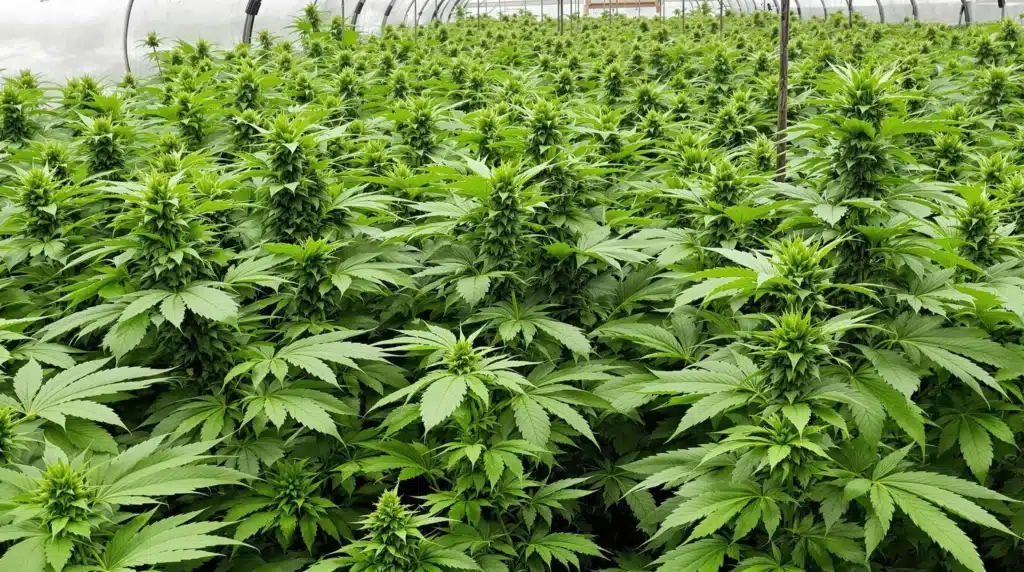
Overwatering or Underwatering
Incorrect watering practices can harm mycorrhizal fungi. Overwatering reduces oxygen availability in the root zone, while underwatering dries out the fungal network, compromising its functionality. Maintaining balanced moisture levels is crucial for optimal fungal activity. Use moisture meters or similar tools to ensure consistent soil conditions.
Consistent watering practices ensure the fungi can thrive and support your cannabis plants effectively. Monitoring soil moisture regularly helps avoid stress on both plants and fungi. Proper irrigation systems can further enhance water distribution and minimize the risks of over- or underwatering.
Using Mycorrhizae with Sterile Media
Sterile growing media lack the organic matter needed for fungi to establish. Introducing compost or organic amendments ensures a suitable environment for mycorrhizal colonization. Without these inputs, the fungi may fail to integrate into the root system effectively. A healthy microbial environment is essential for fungal colonization and plant growth.
Avoid sterile media or enhance it with organic inputs to create a thriving ecosystem for the fungi and your plants. A balanced soil environment fosters better plant-fungal interactions and improved growth. Transitioning to living soils or enriched substrates can further optimize results.
Choosing the Wrong Mycorrhizal Type
Not all mycorrhizal products are suitable for cannabis. Selecting endomycorrhizal fungi ensures compatibility and effectiveness, avoiding wasted resources and suboptimal results. Cannabis plants specifically benefit from endomycorrhizal strains that promote nutrient absorption and root health. These fungi penetrate plant roots, creating a direct exchange of nutrients and water.
Choosing the right type of fungi is crucial for maximizing the benefits of mycorrhizal products in cannabis cultivation. Researching product specifications and matching them to your plants’ needs is essential for success. Consulting with experts or referencing trusted resources can help growers make informed decisions and achieve optimal outcomes.
FAQs About Best Mycorrhizae for Cannabis
What is the best type of mycorrhizae for cannabis plants?
The best type of mycorrhizae for cannabis plants is endomycorrhizal fungi, as it forms a symbiotic relationship with the plant roots. Strains like Glomus intraradices are particularly effective for enhancing nutrient absorption and improving root health.
How often should I apply mycorrhizae to cannabis plants?
Apply mycorrhizae at planting or transplanting for initial colonization. Reapply during early vegetative stages and before flowering to ensure the fungi remain active and support the plant throughout its growth cycle.
Can I use mycorrhizae in hydroponic systems?
Yes, mycorrhizae can be used in hydroponic systems. Soluble mycorrhizal products are ideal for hydroponics, as they can be applied as a root drench to ensure even distribution and effective colonization in non-soil mediums.


